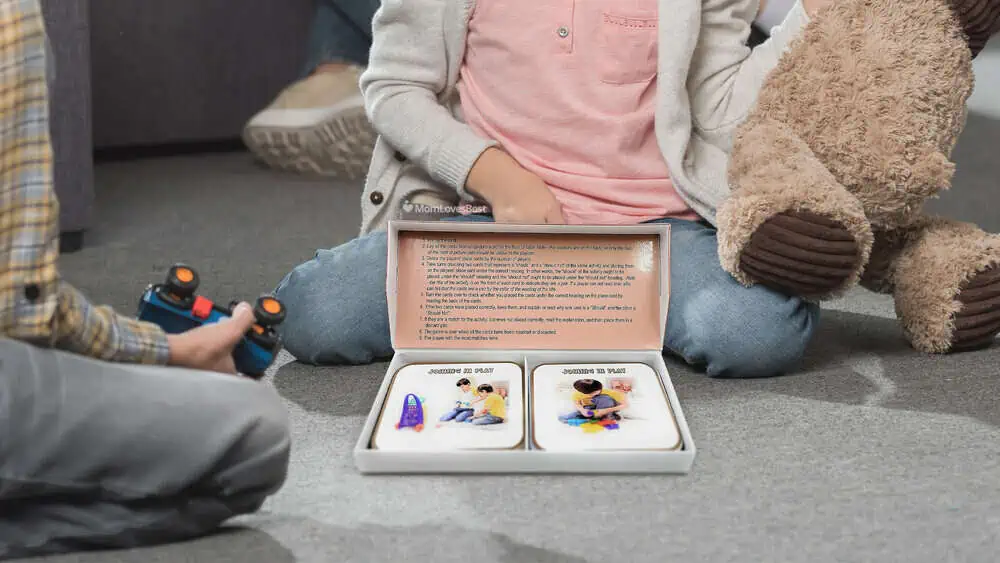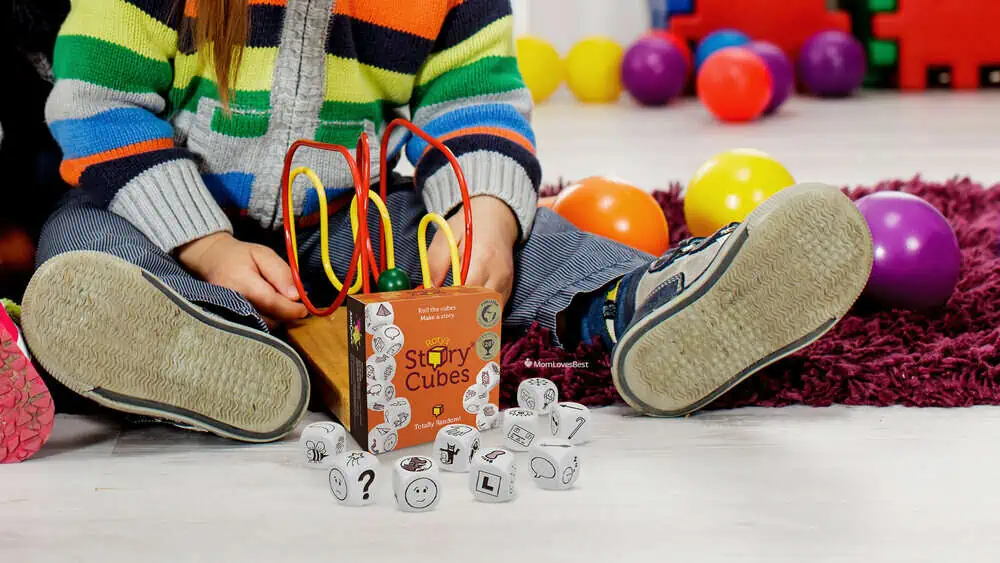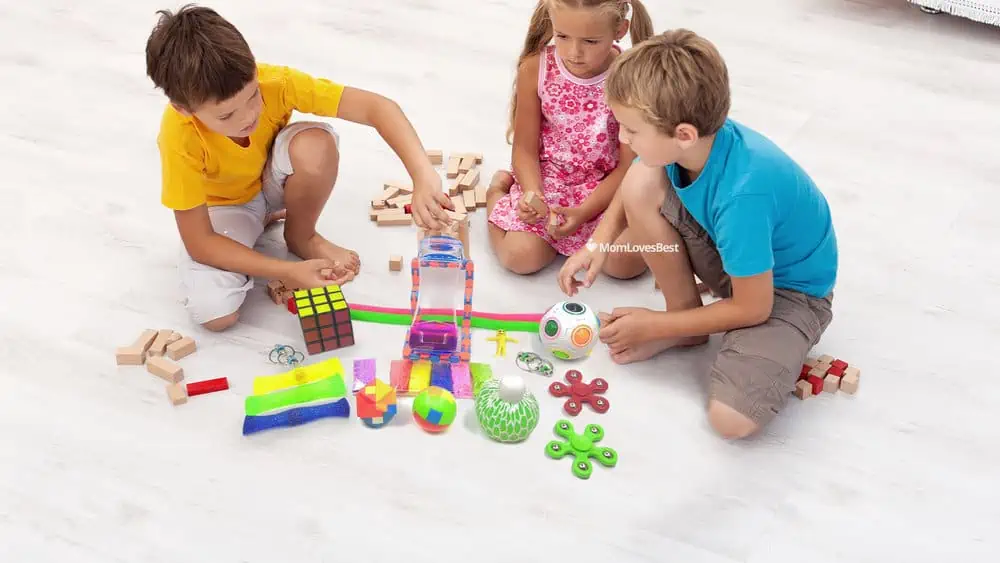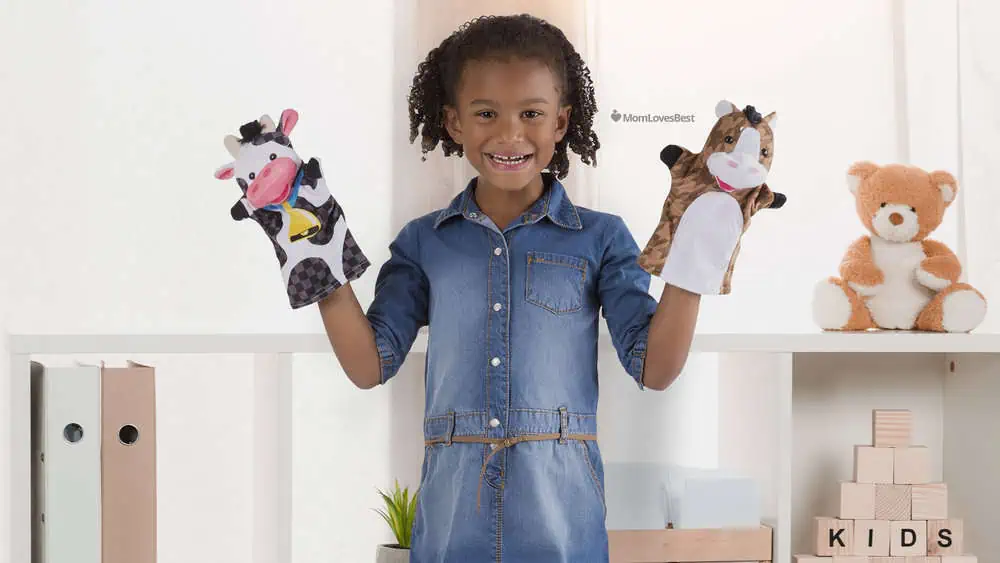Finding the right toys for kids with ADHD isn’t always easy. We understand the struggle to find options that engage your child without causing frustration or sensory overload.
We spent hours researching and testing to find the best toys for kids with ADHD. We narrowed it down to 13 terrific options that balance fun with developmental benefits.
These picks help children improve focus, refine motor skills, and regulate their energy levels. They are age-appropriate, appeal to various sensory needs, and offer safe, engaging play for a wide range of interests.
Our kids love them, and we think yours will too.
- Child-safe design
- Contains over 500 discs
- Endless fun & engineering education
- 64 durable cards
- Teaches good morals
- Hones reasoning and good communication
- Pocket-sized creative story generator
- Very affordable
- Comes with a case
- Easy to use but hard to master
- Original challenging 3D labyrinth
- Multiple levels of difficulty
- Includes 32 sensory toys
- For all occassions
- High-quality materials
- Exquisite appearance
- Extra strong and durable
- Great value for money
How to Choose a Toy for a Child with ADHD
ADHD is common, affecting about 6.4 million children in the United States. While the average diagnosis happens around age 7, symptoms often appear as early as age 3 (1).
Shopping for these kids requires a slightly different approach. You want toys that accommodate their unique play needs. The best options help children sharpen their focus, boost confidence, and soothe anxiety (2).
Here is what we look for when selecting toys for kids with ADHD:
Product Reviews
Ready to shop? We have compiled 13 excellent toys that help with focus, energy regulation, and creative play.
Lego Duplo Creative Play
Best Overall Toy for Kids with ADHD
Lego and Duplo sets are classics for a reason. The methodical nature of clicking bricks together is incredibly therapeutic for children with ADHD. It offers a clear beginning and end to a task, which helps them focus and achieve a goal.
Duplo bricks are larger and easier to handle, making them perfect for toddlers around 18 months. Standard Lego sets offer more complexity for kids over 3. This specific set comes in a sturdy storage box, which helps keep the play area organized, a huge plus for parents.
Viahart Brain Flakes
Best Toy for Focus
This building set breaks the mold of traditional blocks. The interlocking, flower-shaped discs let children build in any direction. There is no “right” way to play, which removes the pressure of following strict instructions.
It helps children enter a zone of deep focus while stimulating coordination. Kids ages 5 and up can build everything from Ferris wheels to abstract art. We love that it encourages open-ended creativity, allowing kids to build freely without fear of making a mistake.
Thought Spot Shoulds and Should Nots Card Game
Best Multiplayer Game
Long board games can be torture for a child who struggles to sit still. This fast-paced card game keeps things moving quickly. It is designed for kids 4 and older, though younger siblings can often join in with help.
The objective is simple: match the “should” behavior with the “should not” behavior. Players then explain their reasoning. It turns social emotional learning into a competition. This helps kids practice turn-taking, reasoning, and recognizing appropriate social cues in a low-pressure environment.
Kinetic Sand
Best Sensory Toy for Kids with ADHD
Kinetic Sand is mesmerizing. It sticks to itself rather than your hands, creating a unique tactile experience that flows like liquid but shapes like clay. It is perfect for building castles or simply squeezing to release tension.
The cleanup is incredibly easy since it doesn’t scatter like regular sand. For kids with ADHD, the texture is deeply calming. It works as a great tool for self-regulation when a child feels overstimulated or anxious. We admit, we love playing with it just as much as the kids do.
Rory's Story Cubes Game
Best Toy for Creative Thinkers
If your child struggles with creative writing or verbal expression, this game is a game-changer. You roll nine dice and use the images that land face-up to weave a story. It gamifies storytelling without the pressure of handwriting or spelling.
The manufacturer suggests age 6 and up, but younger kids with vivid imaginations handle it well too. It’s pocket-sized, making it great for travel or waiting rooms. You can also buy themed expansions to match your child’s specific interests.
Microsoft Studios Minecraft Video Game
Best Video Game for Kids with ADHD
Minecraft is essentially digital Lego. It is a massive hit with the ADHD community because it offers an endless sandbox for creativity. Players gather resources, build structures, and explore worlds. It encourages planning, problem-solving, and perseverance.
You can play in “Creative Mode” for stress-free building or “Survival Mode” for a challenge. While it is often recommended for teens, many elementary-aged kids excel at it. Just ensure you monitor screen time and supervise online interactions for children under 13.
Spin Master Perplexus Original Maze Ball
Best Toy for Problem Solvers
This 3D puzzle ball contains 22 feet of twisting track. The goal is to guide a small steel ball through the maze by rotating the sphere. It requires steady hands and intense focus.
It is challenging enough to keep kids engaged but not so impossible that they give up. This toy helps improve hand-eye coordination and teaches patience. It is a great “quiet time” toy for kids ages 5 and up who need to center themselves.
ChicFunhood 32 Pack Sensory Fidget Toys
Best Combination Toy Set
Variety is key for preventing boredom. This massive set includes 32 different sensory toys, from squishy balls to stretchy strings. It ensures your child always has a novel tactile experience available.
It is an excellent value pack, perfect for filling a “calm down corner” bin or splitting up as party favors. While recommended for ages 3 and up, the sheer variety means there is something for every sensory preference in the box.
Tangle Twisty Fidget Toys
Best Fidget Toy
Many schools allow Tangles because they are silent. This pack of five allows kids to twist, turn, and reshape the plastic segments endlessly. It keeps hands busy so the brain can focus on listening.
They come in bright colors and can be snapped together to make a giant loop. They are small enough to fit in a pocket for on-the-go regulation. Note that the small segments can pop apart, so keep them away from children under 3.
Vanblue Marble Mesh Finger Toys
Best Budget Pick
Sometimes the simplest toys are the best. This fidget consists of a marble sewn inside a durable mesh tube. Kids push the marble back and forth, bend the tube, or squish it.
It is completely silent and unobtrusive, making it perfect for the classroom or dinner table. The repetitive motion is soothing and helps relieve anxiety without drawing attention. At this price point, you can buy a few to keep in the car, backpack, and home.
Simon Electronic Memory Game
Best Toy for Older Kids with ADHD
The classic Simon game is actually a fantastic brain trainer. It lights up in a sequence that you must memorize and repeat. The game gets progressively faster, demanding total concentration.
For a child with ADHD, this gamifies “working memory”, a skill they often struggle with. The lights and sounds provide instant feedback. It is suitable for kids 7 and up and is fun enough that adults will want to steal a turn.
Play-Doh Basic Fun Factory
Best Classic Toy for Kids with ADHD
Play-Doh offers essential heavy work for little hands. Squeezing the dough through the Fun Factory lever provides proprioceptive input, which can be very grounding for energetic kids. It allows for creative expression with zero rules.
It is a timeless toy for kids 3 and up. You can extend the play by adding household items like plastic cutlery, coins, or rolling pins. It is a simple, affordable way to combine creativity with sensory regulation.
Melissa & Doug Animal Hand Puppets
Best Toy for Preschoolers
Role-playing is a safe way for children to explore emotions and social dynamics. These soft hand puppets help kids verbalize feelings they might otherwise hide. They are great for acting out difficult school situations or practicing conversation skills.
This set includes eight friendly animals that fit both child and adult hands. The fabric is soft and washable, making them durable enough for daily play. They are ideal for kids ages 3 and up who need a confidence boost.

































